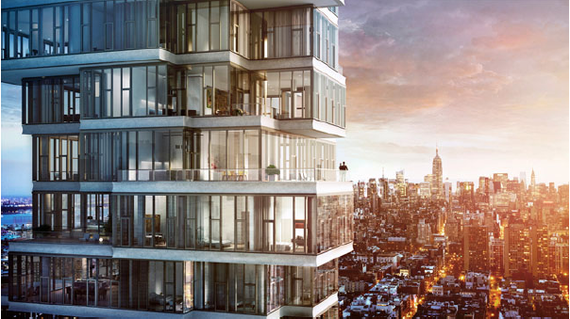Luxury -- defined by Miriam-Webster as both "a condition of great comfort, ease, and wealth" and "something that is not usually or always available."
While New York City is without a doubt experiencing a wave of luxury real estate boasting affluence and amenity, the breadth of properties defined by this category lingers as a paradox.
The New York Observer analyzed the increase of "luxury" properties and their exit from exclusivity, noting, "...'luxury' in New York City nowadays appears to be anything but 'not usually available.'" It is now important to understand that if luxury is no longer defined by exclusivity, then where the classification comes from.
There are two distinctive categories that can be used to define the luxury tier of the market -- that based on building and unit features and amenities, and a second based on apartment price. A focal point of a new development's sales is the building's branding, which is often crafted around the "luxury" amenities offered, however since high-end finishes, appliances, and services are a commonality to so many buildings, the line between luxury and 'less than' is blurred.
While sales price is a very clear distinguisher, there are multiple classifications of the number that actually defines the tier, leading to the term being thrown around. President of real estate appraisal firm Miller Samuel, Jonathan Miller defines luxury as apartments costing $10 million or more, while other definitions include multiple tiers of luxury, including "affordable," "mid-level," and "ultra" luxury.
After seeing the many different developments and their features, New York's standard of living may just demand "comfort, ease, and wealth," in much of its real estate -- the developments just represent the criteria requested by the city's clientele.
A similar phenomenon symbiotically occurring with the development craze is the multiplication of the "penthouse." While the penthouse used to be a rarity and truly defined as a unique piece of real estate as the top floor apartment, many new buildings today boast a host of penthouses spanning multiple floors. In some buildings, such as 56 Leonard where each of the ten offer "its own unique domain," the unique and rare component of the penthouse is still present, but the original definition is not.
The expansion of luxury, and even the penthouse, is a symbol of the direction in which real estate in New York City is moving, both in quantity and value.
